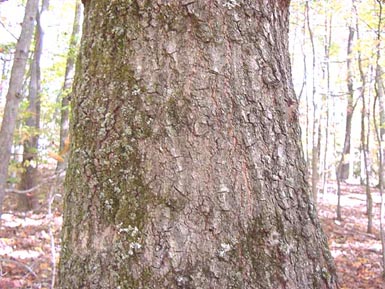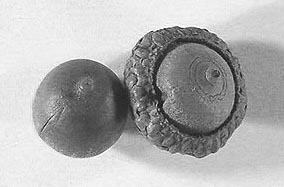Form: This is a medium sized tree reaching 60-80 ft. in height and 2-3 ft. dbh. It often has a swollen bole near the base of the tree.
Leaves:
Arrangement: alternate
Shape: *deeply 5-9 lobed
Margin: lobes bristle tipped;
Texture: waxy/shiny above
Venation: pinnate

Bark: The bark is bluish-gray when young and normally nearly black when older. It is thick and rough at base and thin with striped, shallow ridges above

Twigs and buds: Twigs are glabrous, slender, and reddish-brown. Terminal buds are angled, slightly pointed, and covered by dark reddish brown scales.
Flowers and fruit: The acorn cap covers 1/3-1/2 of the nut.

Distinguishing characteristics: The acorn has circles (concentric circles) around the point (apex). The sinuses extend nearly to midrib (very deep lobes).
Range: The northern range extends into Maine and it is found southwest into Illinois and further south into Alabama.
Silvics: Scarlet oak is intolerant of shade. It most often grows on dry to uplands due to drought resistance.
Ecological and cultural importance: It can be substituted for low-grade northern red oak lumber and produces mast that is an important food source for wild turkeys, white-tailed deer, and squirrels.